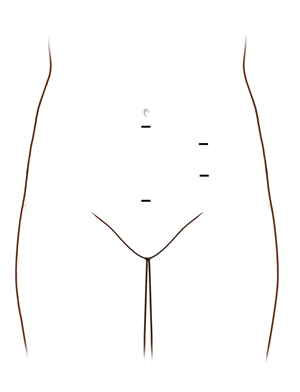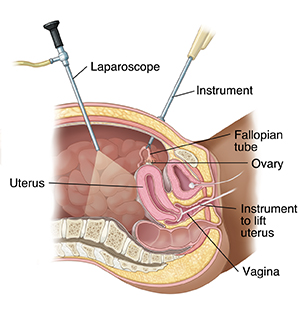Laparoscopy is a surgical procedure. It lets the surgeon see your reproductive organs up close. After you are given anesthesia, small cuts (incisions) are made in your belly (abdomen). A laparoscope is put into one of the small incisions. A laparoscope is a long, thin tube with a camera on the end. It sends pictures to a video screen. The surgeon can see inside the body. Surgical tools are put through the other incisions to complete the procedure.
A closer look
Your surgeon needs to see clearly during surgery. To do this, your abdomen is inflated with a harmless gas. A device may be put into the vagina to lift the uterus. This helps your surgeon see your organs better through the scope.
Risks and possible complications of surgery
These may include:
-
Infection.
-
Bleeding.
-
Damage to blood vessels, nerves, muscles, uterus, ovaries, fallopian tubes, bowel, bladder, or ureters.
-
Risks of anesthesia.
-
Blood clots.
-
Hernia at the incision site.
-
Need for a larger incision.
Featured in



